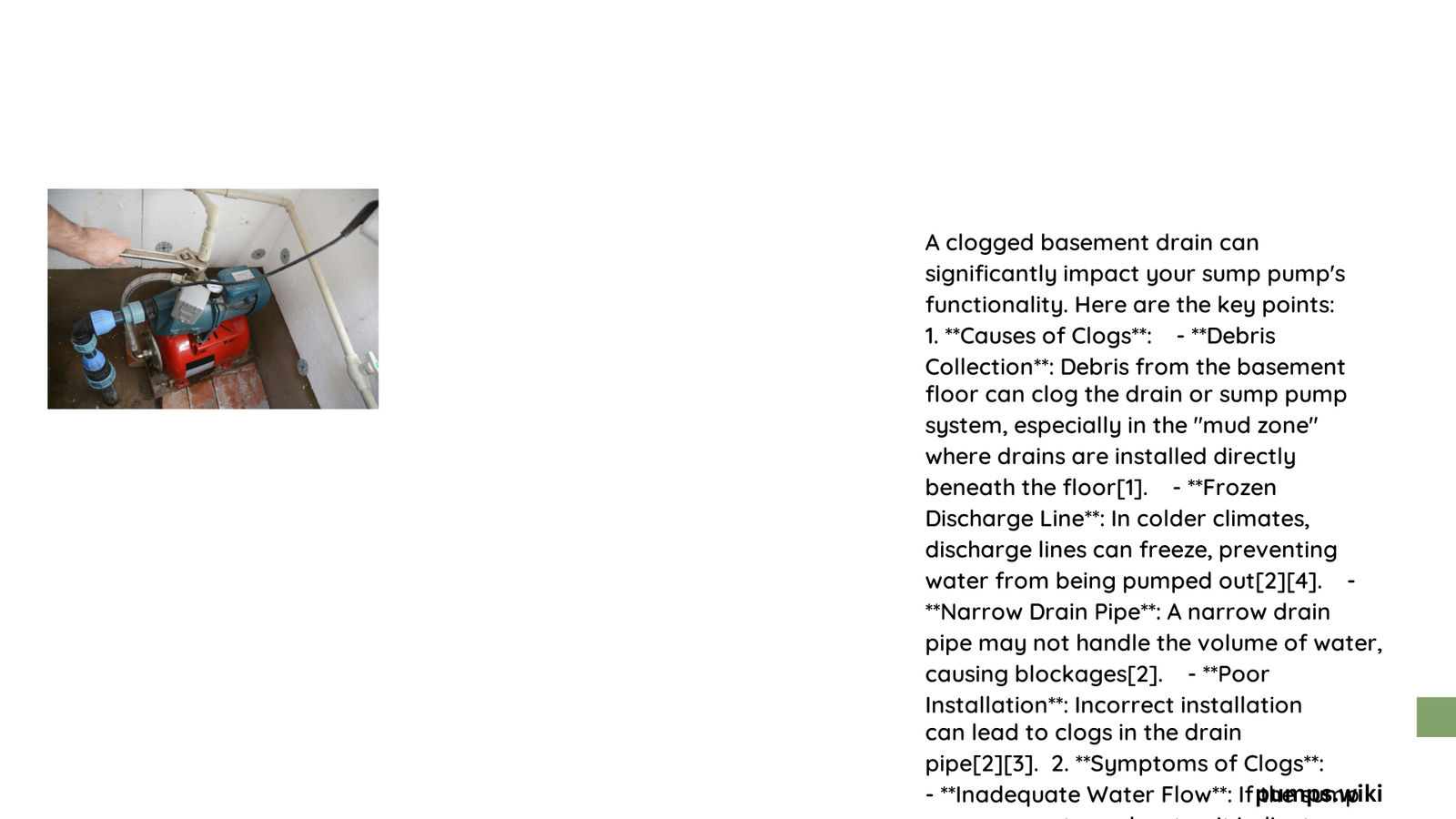When a basement drain becomes clogged, homeowners face potential water accumulation and significant property damage risks. Sump pumps emerge as a critical solution for managing water drainage challenges, offering a proactive approach to preventing basement flooding and mitigating potential structural complications caused by persistent moisture and blocked drainage systems.
What Causes Basement Drain Blockages?
Basement drain clogs can result from multiple factors:
- Sediment Accumulation
- Dirt and debris buildup
- Mineral deposits
-
Organic matter decomposition
-
Structural Issues
- Tree root intrusion
- Pipe misalignment
-
Aging drainage infrastructure
-
External Environmental Factors
- Heavy rainfall
- Snowmelt
- Ground water table fluctuations
Can a Sump Pump Directly Resolve Drain Clogs?

While sump pumps cannot mechanically clear drain blockages, they play a crucial role in water management:
| Sump Pump Function | Water Management Capability |
|---|---|
| Water Redirection | ✓ Moves water away from foundation |
| Flood Prevention | ✓ Reduces basement water accumulation |
| Drainage Support | ✓ Complements existing drainage systems |
Recommended Sump Pump Solutions
Zoeller M53 Mighty-Mate
- Specifications:
- 1/3 HP motor
- Handles debris up to 1/2-inch
- Cast-iron construction
- 2,580 gallons per hour capacity
Wayne CDU980E
- Features:
- 3/4 HP powerful motor
- Top suction debris filtering
- 5,490 gallons per hour performance
- Stainless steel components
Professional Drain Unclogging Strategies
Comprehensive Approach
- Professional drain camera inspection
- Hydro-jetting for thorough cleaning
- Root removal techniques
- Pipe rehabilitation or replacement
Preventative Maintenance Techniques
Proactive Drain Care
- Regular professional inspections
- Annual drain cleaning
- Install drain screens
- Monitor water pressure
- Maintain proper landscape grading
Cost-Benefit Analysis
Potential Damage Costs
– Minor water damage: $500 – $1,500
– Moderate flooding: $2,000 – $5,000
– Extensive structural repairs: $10,000+
Sump Pump Investment
– Basic model: $100 – $300
– Advanced system: $500 – $1,500
– Professional installation: $500 – $1,000
Technical Considerations
Sump Pump Effectiveness Factors
- Pump horsepower
- Discharge rate
- Basin size
- Float switch reliability
- Discharge pipe configuration
When to Seek Professional Help
Warning Signs
- Persistent water accumulation
- Unusual drainage sounds
- Visible pipe damage
- Recurring blockages
- Musty basement odors
Conclusion
Sump pumps serve as a critical component in comprehensive water management strategies. While they cannot directly clear drain clogs, they significantly mitigate water-related risks by redirecting excess moisture and preventing basement flooding.
Recommended Next Steps
- Conduct professional drain inspection
- Install appropriate sump pump system
- Implement regular maintenance schedule
Reference:
– Family Handyman Sump Pump Guide
– EPA Water Damage Prevention
– Basement Waterproofing Experts
